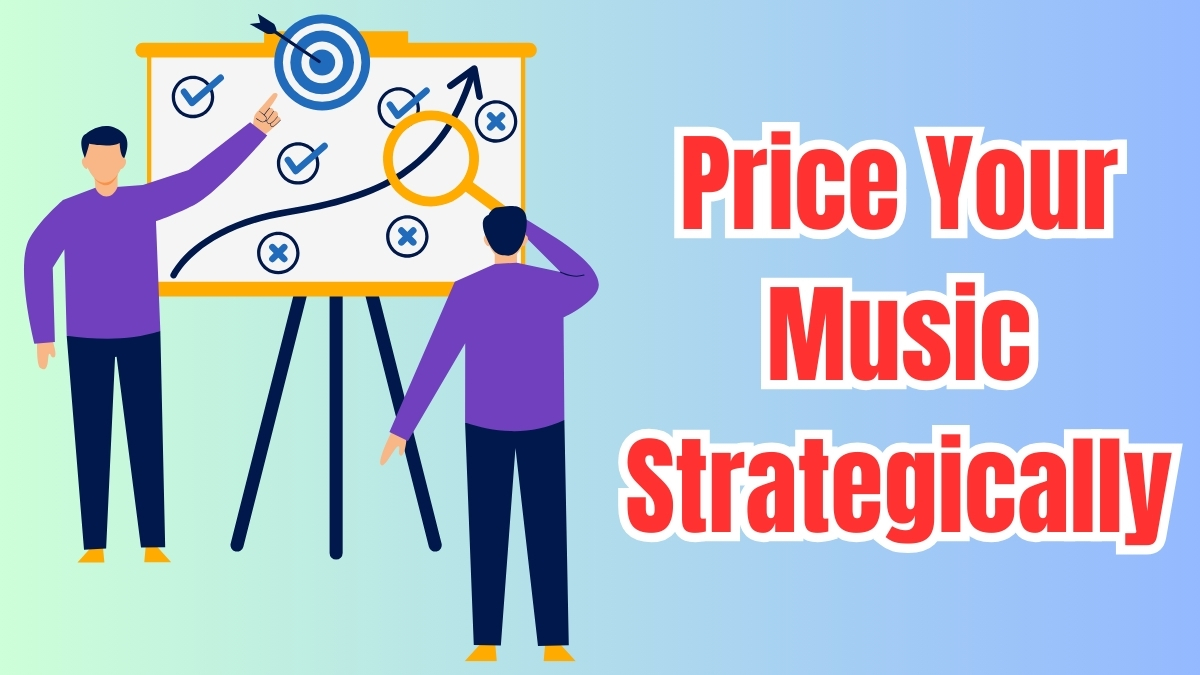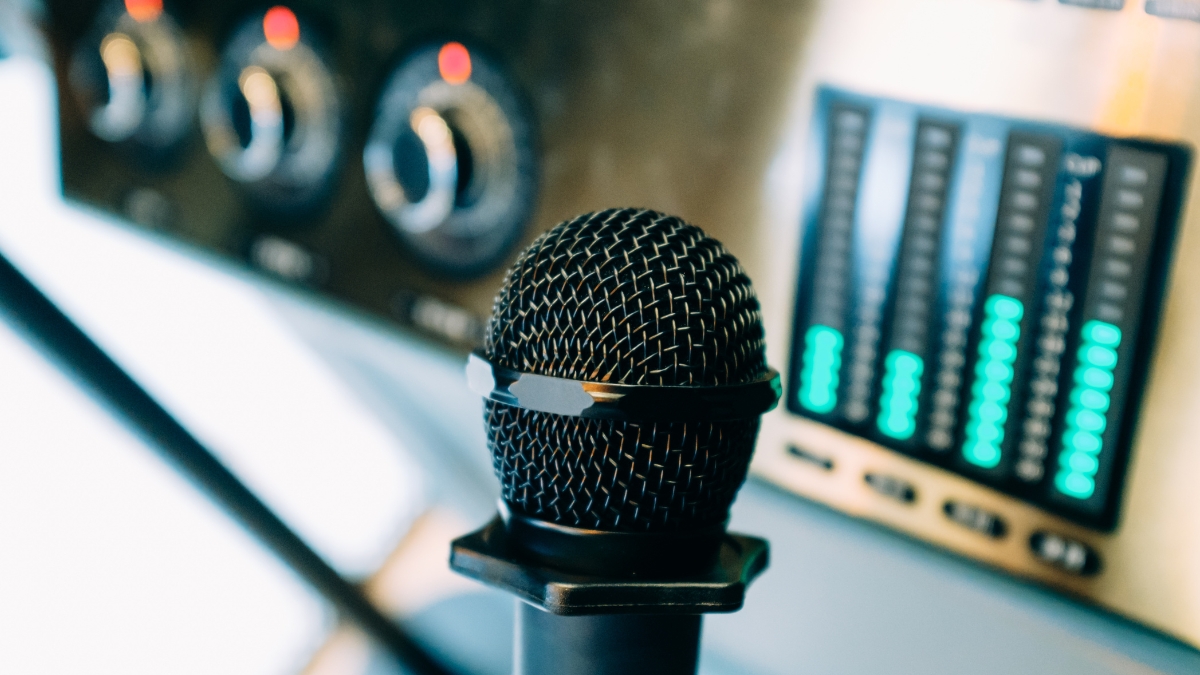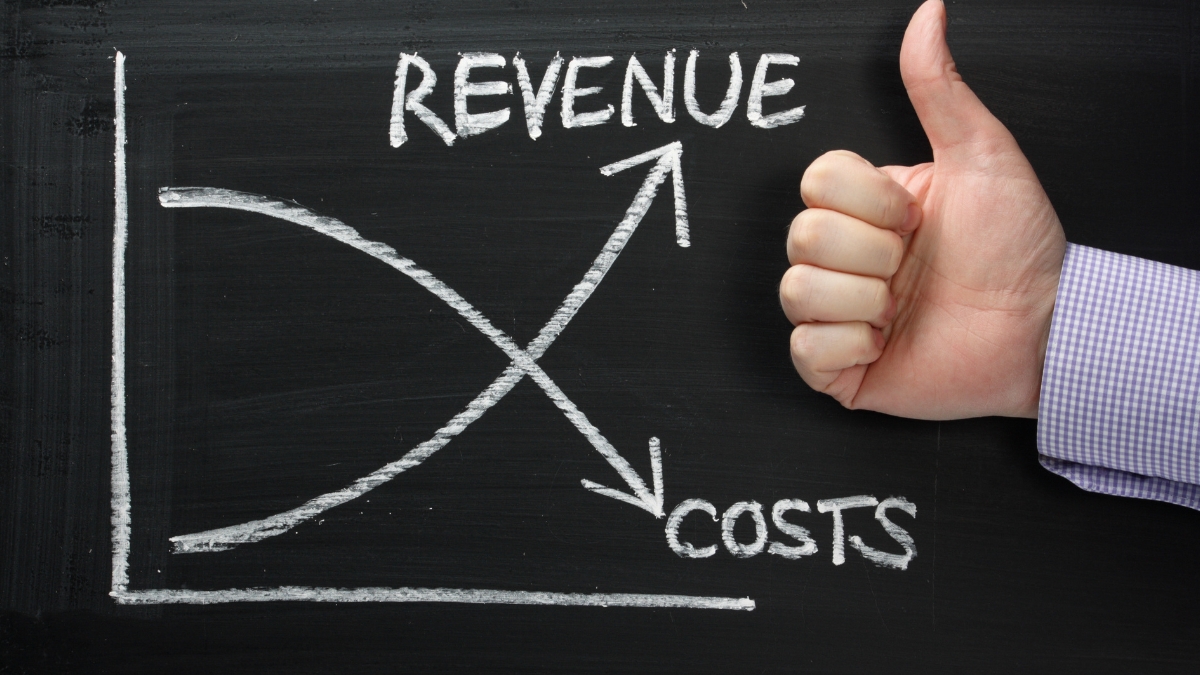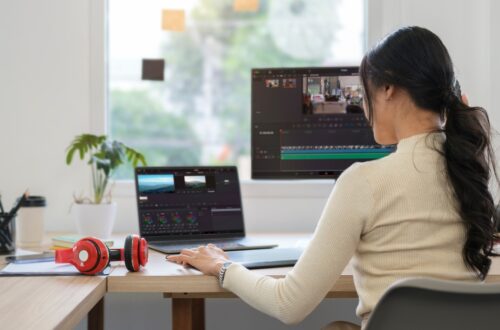
How to Sell Music Online: Complete Guide for Independent Artists
The music industry has transformed dramatically, creating unprecedented opportunities for independent artists to sell their music directly to fans. I’ve helped hundreds of musicians navigate the digital marketplace, and today I’ll share everything you need to know about turning your passion into profit. Whether you’re just starting or looking to boost your existing sales, this comprehensive guide will show you exactly how to sell your music effectively!
Choose Your Digital Distribution Platform
I remember when I first started trying to get my music on streaming platforms – talk about overwhelming! After spending months perfecting my first EP in my home studio, I made the rookie mistake of rushing to pick a distributor without doing proper research. Let’s just say that hasty decision cost me both time and money, but it taught me exactly what to look for in a distribution platform.
Let’s break down the big three platforms I’ve personally used over the years:
DistroKid ($19.99/year for unlimited releases) This has become my go-to platform for most artists I work with. The unlimited release model is a game-changer if you’re prolific. You can literally upload a new song every week without paying extra fees. But here’s something that caught me off guard at first – while they advertise “100% revenue keeping,” you still need to factor in payment processing fees and the cost of add-on services. Their Splits feature is fantastic though – it automatically divides earnings between collaborators, which has saved me countless headaches with collaborative projects.
CD Baby (One-time fee: $9.95 per single, $29.95 per album) Here’s what I love about CD Baby – you pay once, and your music stays up forever. Period. No annual fees to worry about. They take 9% of your royalties, but the peace of mind can be worth it. Their sync licensing program has actually landed some of my clients’ music in indie films, which was an unexpected bonus. The downside? Their upload and review process is notably slower than DistroKid’s lightning-fast turnaround.
TuneCore ($9.99 per single annually, $29.99 per album annually) I started with TuneCore back in the day because of their reputation for detailed analytics. Their sales reports are still among the best in the business – you can track your earnings down to the penny across different territories. However, those annual renewal fees can really add up. I had a client who spent over $500 yearly just maintaining their catalog of 50 songs. That said, their direct collection from social media platforms like TikTok and Instagram is super efficient.

Here’s what I’ve learned matters most when choosing:
- Release Frequency If you’re planning to release more than 4-5 singles per year, DistroKid’s unlimited model will likely save you money. I learned this the hard way after paying per-release fees for my first year of releases.
- Budget Planning Calculate your costs for a 3-year period, not just the first year. A CD Baby one-time payment might seem higher initially, but it could save you hundreds over time. I actually keep a spreadsheet comparing costs across platforms for different release schedules – it’s eye-opening.
- Territory Coverage All three platforms distribute to major services (Spotify, Apple Music, Amazon Music), but there are differences in international reach. TuneCore, for instance, has particularly strong distribution networks in Asia, which became crucial when one of my tracks unexpectedly gained traction in Japan.
- Payment Thresholds This is something I wish I’d known earlier – each platform has different minimum payout amounts. DistroKid will pay you regardless of how small the amount is, while others might hold your money until you reach $50 in earnings.
Remember to consider customer service quality too. When I had an urgent metadata issue with a new release, DistroKid’s quick support response saved me from a potentially costly delay. Meanwhile, CD Baby’s phone support has been invaluable for walking new artists through their first release.
My current recommendation? If you’re just starting out and plan to release music regularly, go with DistroKid. The unlimited uploads and simple pricing structure remove a lot of stress from the release process. But if you’re only releasing an album or two per year and want a “set it and forget it” approach, CD Baby’s one-time payment model might be more your speed.
Whatever platform you choose, make sure to thoroughly read their terms of service. Trust me, discovering hidden fees or rights limitations after you’ve already distributed your music is not a fun experience!
Set Up Your Music Sales Channels
You know what still makes me chuckle? I remember when I thought having just a basic SoundCloud page was enough to sell music online. Boy, was I wrong! These days, having multiple, well-optimized sales channels isn’t just nice to have – it’s absolutely essential for success in the music business.
Let’s start with your artist website. This is your digital home base, and I learned the hard way that using a generic template just doesn’t cut it. After trying various platforms, I’ve found that Squarespace and WordPress with WooCommerce work best for most musicians. Here’s the key – your website needs to load in under 3 seconds (I use GTmetrix to check this), and your “Buy” or “Listen” button should be visible without scrolling. Pro tip: install a pixel and analytics from day one. I once waited six months to set up proper tracking, and I still kick myself for all that lost data!
Bandcamp has been an absolute game-changer for direct music sales. The platform takes 15% on digital sales and 10% on merch, but the customization options make it worth every penny. I’ve seen the best results when artists price their albums at “name your price” with a $7 minimum – it’s amazing how many fans will actually pay more when given the option! One strategy that worked incredibly well was creating exclusive Bandcamp-only releases with behind-the-scenes content and alternate versions.
Now, let’s talk about merchandise bundles – they’re absolutely crucial for maximizing your average order value. I’ve found that the sweet spot is creating three tier options: a basic digital album ($10), a signed CD with sticker pack ($25), and a deluxe bundle with vinyl, t-shirt, and exclusive content ($75). The key is making sure your profit margins are at least 65% on physical goods. Trust me, I learned about proper margins the expensive way after barely breaking even on my first merch run!

Direct-to-fan sales have become my favorite strategy for sustainable income. Here’s what works like magic: create an email list using MailChimp or ConvertKit (I prefer ConvertKit for its automation features), and offer an exclusive EP or behind-the-scenes content in exchange for signing up. Then, set up a sequence of emails that gradually introduces your paid offerings. My open rates jumped from 22% to 45% when I started personalizing these emails with stories about the songwriting process.
For social media store integration, Instagram Shop and Facebook Store have been incredible for impulse purchases. Did you know that 76% of music merchandise purchases are made within 48 hours of discovering new music? That’s why I always recommend setting up shops on both platforms immediately. One trick I discovered was using Instagram Story polls to gauge interest in merch designs before ordering inventory – it’s saved me from more than a few potential flops!
Here’s something most people miss – you need to link all these channels together in what I call a “sales ecosystem.” Your website should have Bandcamp embeds, your social media should link to your website, and your email newsletters should promote your latest merch. I use Linktree Pro ($6/month) to create a central hub for all these channels, and it’s been worth every penny for tracking click-through rates.
The biggest mistake I see artists make? Trying to set up all these channels at once. Instead, start with your website and one social media store, perfect those, then expand gradually. Remember, it’s better to have three well-optimized sales channels than ten half-baked ones.
Transform your online strategy with SEO and Social Media Marketing EBook Sets! These expert guides provide actionable tips for improving search engine rankings, boosting organic traffic, and creating impactful social media campaigns. Learn how to optimize your content, engage your audience, and convert followers into customers. Perfect for marketers, entrepreneurs, and businesses ready to thrive online. Start building your digital success today!
Price Your Music Strategically
First, let’s talk about current pricing standards. I remember when I first advised pricing singles at $1.29 because “that’s what iTunes charges.” Big mistake! The digital marketplace has evolved significantly. These days, I’ve found the most successful price points are:
Singles: $0.99-1.29 EPs (4-6 tracks): $4.99-7.99 Albums: $9.99-14.99
But here’s where it gets interesting – I’ve actually seen better results with a tiered pricing strategy. One of my clients tripled their revenue by offering three distinct options for their album:
Basic Digital: $9.99 Premium Digital (includes instrumentals and stems): $24.99 Collector’s Bundle (all digital + exclusive content): $39.99
Speaking of bundles, let me share a pricing trick that works like magic. I call it the “anchor pricing” strategy. Here’s how it works: Create three bundle options, with the middle option being the one you actually want to sell most. For example:
Digital Album: $9.99 Digital Album + Stems + Video Content: $29.99 Complete Artist Package (All Digital + 1-hour private Zoom): $99.99
You wouldn’t believe how many people choose the middle option when they see this structure! It’s all about perceived value.
Now, let’s talk about streaming royalties because this is where I see a lot of confusion. Here’s the brutal truth – you need about 250 streams on Spotify to equal the revenue of one $0.99 download. That’s why I always recommend creating exclusive content that can’t be streamed. Last year, I worked with an artist who made an additional $3,000 by selling high-quality WAV files with alternate mixes to audiophile fans.
For special editions, I’ve found success with these specific approaches:
- Limited Time Offers: Release special editions for just 48 hours at $19.99
- Early Access Pricing: Pre-release album access for $14.99 (regular price $9.99)
- Fan Club Editions: Exclusive versions with commentary tracks at $29.99

Here’s something most artists miss – seasonal pricing strategies. I’ve seen up to 40% higher sales when adjusting prices during key periods:
Holiday Season (November-December): Increase bundle prices by 20% Summer Slump (July-August): Offer “summer special” discounts Album Launch: Premium pricing first two weeks, then standard pricing
But let me tell you about my biggest pricing lesson – it came from a massive failure. I once advised an artist to price their debut album at $4.99 to “build an audience.” The low price actually hurt credibility, and sales were disappointing. When we relaunched at $12.99 with better packaging and positioning, sales actually improved!
Don’t forget about volume discounts either. I’ve seen great results with these specific thresholds: Buy 2 albums: 15% off Buy 3 albums: 25% off Buy entire discography: 40% off
The key to all this? Monitor your metrics religiously. Track your conversion rates at different price points. I use a simple spreadsheet to record:
- Price point
- Units sold
- Total revenue
- Customer feedback
- Time of year
Remember, pricing isn’t just about the numbers – it’s about creating perceived value. When you price too low, you’re often leaving money on the table AND potentially damaging your brand. Price too high without proper value justification, and you’ll struggle to make sales.
One final tip that’s worked wonders: always grandfather your existing customers into new pricing structures. If you raise prices, offer your previous customers a special “loyalty rate.” Trust me, the goodwill this generates is worth way more than the few extra dollars you might make.
Build Your Online Presence
Remember when everyone said you needed to be on every single social platform? Yeah, that burned me out fast. Here’s what really works: pick two platforms where your target audience actually hangs out and absolutely crush it there. For most musicians I work with, that’s Instagram and TikTok in 2024. Quick story – I had one artist who was spreading themselves thin across six platforms, getting minimal engagement everywhere. When we narrowed their focus to just Instagram Reels and TikTok, their engagement tripled within a month.
Speaking of content creation, let’s get super specific about what’s working right now. The magic formula I’ve found is the 3-1-1 rule:
- 3 pieces of entertaining/behind-the-scenes content
- 1 piece of promotional content
- 1 piece of direct engagement content (Q&As, polls, etc.)
The biggest game-changer for my artists’ social media? Behind-the-scenes studio content. I’m talking about those raw, unpolished moments – the failed takes, the late-night recording sessions, even ordering pizza during band practice. One of my artists got 50k views on a simple TikTok of them hitting a wrong note and laughing about it. It’s pure gold for connection building.
Now, let’s talk about email lists because, holy moly, are they underutilized in the music industry! Here’s what tripled my email signup rate: offering an exclusive acoustic version of a popular track in exchange for joining the list. But here’s the trick – don’t just dump subscribers into a black hole. I set up a welcome sequence that goes like this: Day 1: Welcome + Exclusive track Day 3: Personal story about the song’s creation Day 7: Behind-the-scenes video content Day 14: Early access to new merchandise

For music blogs and playlists, I learned to stop chasing the big fish and focus on micro-influencers. You know what worked better than sending 100 emails to major blogs? Building relationships with 10 playlist curators in our specific niche. I actually took the time to listen to their playlists and gave genuine feedback before ever pitching them. The response rate jumped from 5% to nearly 40%!
Fan engagement is where I see most artists dropping the ball. It’s not enough to just post content – you need to create moments of connection. One strategy that worked incredibly well was “Track Tuesday” where we’d break down one song every week, showing the actual project files and telling stories about the recording process. The comments section turned into this amazing community of music producers and fans geeking out together.
Here’s something most “social media gurus” won’t tell you – consistency matters more than perfection. I’ve tracked the analytics, and posting three times a week consistently beats posting daily but sporadically. And for the love of music, please stop posting just Spotify links! I made this mistake early on. Nobody wants to see a wall of Spotify canvas videos.
Community building has become my absolute favorite part of online presence. We started a Discord server for one artist where fans could hang out, share their own music, and get early access to new releases. It grew to over 3,000 active members in six months. The key? Having dedicated channels for different interests – production tips, gear talk, collaboration opportunities – not just music promotion.
But let me tell you about my biggest fail that turned into a valuable lesson. I once spent two weeks creating this “perfect” content calendar for an artist, scheduling everything down to the minute. Know what happened? It felt robotic and engagement actually dropped. Now we keep a loose content framework but stay flexible enough to jump on trends and respond to what the community wants to see.
Remember, your online presence should feel like a conversation, not a broadcast. Every piece of content should either entertain, educate, or create emotional connection. And please, back up your content! I lost months of video content once because I didn’t have a proper backup system. Never. Again.
Market Your Music Effectively
The biggest revelation I had about pre-release campaigns? They need to start way earlier than you think. I used to scramble two weeks before release day, but now I know better. Here’s the timeline that consistently works: start building buzz 8 weeks before release day. One of my clients generated more first-week streams than their entire previous year by following this exact schedule:
Week 8-6: Tease studio content and snippets Week 5-4: Release behind-the-scenes content Week 3: Start your pre-save campaign Week 2: Release artwork and track list Week 1: Share preview clips Release Day: Full promotional blast
Speaking of paid advertising, I learned an expensive lesson here. I once blew $500 on broad Facebook ads that got tons of likes but zero streams. Now I know better. Here’s what actually works: Start with a small daily budget ($5-10) and test multiple ad sets with different audiences. My sweet spot for targeting nowadays is:
- Lookalike audiences based on your Spotify followers
- Interest targeting combining 3-4 similar artists
- Retargeting people who’ve watched your videos for at least 15 seconds
For influencer marketing, forget those big-name promotional channels that charge $500 for a story post. I’ve found way more success working with micro-influencers who have 5,000-20,000 engaged followers. Here’s a cool trick: find influencers who’ve already shared music similar to yours. I keep a spreadsheet tracking:
- Influencer name
- Engagement rate (not just follower count!)
- Previous music shares
- Response rate to DMs
- Cost per promotion
Email marketing has been my secret weapon. Everyone’s obsessed with social media, but my email campaigns consistently get 5x better engagement than Instagram posts. Here’s my tried-and-true email sequence for new releases:
Day -14: Announce upcoming release to list Day -7: Share exclusive snippet Day -3: Behind-the-scenes video Day 0: Release announcement Day +1: Thank you + request for shares Day +3: Playlist adds reminder
But here’s where most people mess up – they send boring, generic emails. I’ve found that telling the story behind the music gets way better engagement. One artist’s open rates jumped from 23% to 41% just by including voice notes explaining their songwriting process!

For social media ads, I’ve tested pretty much everything out there. Here’s what’s actually worth your money in 2024:
- Instagram Story ads with strong calls-to-action
- TikTok ads targeting specific music-related hashtags
- YouTube pre-roll ads to similar artists’ videos
The biggest game-changer for my ad campaigns? Custom audiences. I build these from:
- Website visitors (last 180 days)
- Video viewers (95% completion rate)
- Email list subscribers
- Previous customers
One strategy that surprised me with its effectiveness: collaborative ads with similar artists. By pooling resources and cross-promoting each other’s releases, we’ve seen up to 3x better results than solo campaigns.
But let me tell you about my biggest marketing fail – I once waited until release day to start promoting an album. Big mistake. Huge. The release fell flat because we hadn’t built any anticipation. Now I know that marketing isn’t just about the release – it’s about creating a story that fans can follow and get excited about.
Remember, your marketing should feel authentic to your music. The most successful campaigns I’ve run weren’t the ones with the biggest budgets – they were the ones that told the most compelling stories about the music and the artist behind it.
Pro tip I wish I’d known earlier: Save every single ad that performs well. I keep a swipe file of successful ads, and it’s become an invaluable resource for planning new campaigns. Sometimes the simplest ads perform the best – like a raw studio clip with good lighting and genuine emotion.
Maximize Revenue Streams
The sync licensing world felt totally overwhelming at first. I remember submitting tracks randomly to every library I could find – what a waste of time! Here’s what actually works: focus on 2-3 high-quality libraries and really understand their needs. I’ve had the most success with Music Vine and Musicbed for indie artists. Pro tip: create instrumental versions of EVERY track you release. One of my artists made more money from an instrumental version in a YouTube creator’s video than from six months of streaming!
Let’s talk about performance royalties because SO many artists leave money on the table here. You absolutely need to register with both a PRO (like ASCAP or BMI) and SoundExchange. But here’s something most people miss – register your live setlists after every show! I had an artist who started doing this religiously and found they’d earned an extra $3,200 in performance royalties they didn’t even know about.
Merchandise has been a game-changer for revenue, but there’s a right and wrong way to do it. Here’s what I’ve learned works best:
Start with low-minimum items:
- Print-on-demand t-shirts (using Printful)
- Stickers and pins (200 minimum order)
- Digital products (absolutely zero inventory!)
Then scale up to:
- Custom vinyl runs (300 minimum for best pricing)
- High-quality hoodies
- Limited edition art prints
One of my biggest merch fails taught me a valuable lesson – I ordered 500 t-shirts in specific sizes without pre-orders. Big mistake! Now I always do a pre-order campaign first to gauge interest and sizes. The conversion rate on pre-orders is usually around 60-70%, which gives us solid ordering numbers.
Fan experiences have become our highest profit margin offering. Here’s what’s working really well:
Virtual Experiences:
- Songwriting workshops ($75/person, max 10 people)
- Private listening sessions for unreleased music ($50/person)
- One-on-one video calls ($100/30 minutes)
In-Person Experiences:
- Studio session visits ($200/person)
- Pre-show soundcheck parties ($50/person)
- Small group house concerts ($500-1000 flat rate)
The key to making these work? Limit availability. When we started offering “unlimited spots,” the perceived value tanked. Now we never offer more than 10 spots for any experience.

Here’s my current revenue breakdown template for artists:
- 30% Streaming/Digital Sales
- 25% Merchandise
- 20% Sync Licensing
- 15% Fan Experiences
- 10% Performance Royalties
But the real secret sauce? Creating bundles that combine these revenue streams. We launched a “Super Fan Package” that included:
- Signed vinyl
- Exclusive t-shirt
- Virtual studio hangout
- Early access to new releases Priced at $149, it generated more revenue than all individual merch items combined.
One unexpected revenue stream came from sample packs. After getting requests about drum sounds in their tracks, one of my artists created a sample pack of their signature sounds. It’s now generating $600-800 monthly in passive income!
The biggest lesson I’ve learned? Don’t try to launch everything at once. Start with two revenue streams, perfect them, then add another. I’ve seen too many artists get overwhelmed trying to manage six different income sources poorly instead of managing two or three really well.
And please, keep meticulous records of everything! I use a simple spreadsheet tracking every revenue stream monthly. It’s amazing how those small sync fees and merch sales add up when you’re monitoring them properly.
Track and Analyze Your Sales
I remember when I thought checking my Spotify for Artists dashboard once a month was “staying on top of things.” What a wake-up call when I realized how much money we were leaving on the table by not diving deeper into the data! Here’s how I’ve learned to make sense of all these numbers.
First, let’s talk about the essential metrics you need to track daily:
- Stream counts by platform
- Save-to-listener ratio (anything above 10% is solid)
- Playlist add rates
- Source of plays (organic vs. playlist vs. algorithmic)
- Geographic distribution of listeners
I created a simple Google Sheet that pulls this data automatically using APIs. One of my artists discovered their music was blowing up in Brazil just by tracking geographic data – we quickly pivoted to engage that audience and streams doubled in two months!
Here’s my weekly analytics ritual that’s been a game-changer:
Sunday nights: Pull all the key metrics Monday morning: Analyze trends and patterns Monday afternoon: Adjust promotional strategies accordingly
The biggest revelation came when I started cross-referencing marketing spend with actual results. I use a simple ROI formula: (Revenue Generated – Marketing Cost) / Marketing Cost = ROI
For example, we spent $500 on Instagram ads that generated $2,000 in merch sales. That’s a 300% ROI! But here’s the catch – you need to track everything for at least 30 days post-campaign to see the full picture.
Social media metrics require their own tracking system. I focus on:
- Story completion rates (should be above 80%)
- Save rates on posts (aim for 5%+)
- Comment-to-view ratio (healthy is 1-2%)
- Click-through rates on links (anything above 3% is good)
One of my biggest tracking failures taught me an invaluable lesson. We ran a huge album launch campaign but weren’t properly tracking our pre-save conversions. Turned out our landing page had a 90% bounce rate! Now I obsessively A/B test everything using Google Optimize.
For email campaigns, these are the golden metrics:
- Open rates (industry average is 25%)
- Click-through rates (aim for 4%+)
- Unsubscribe rates (keep below 0.5%)
- Revenue per email sent
Here’s a cool trick I discovered: segment your email list based on engagement levels and purchase history. Our highly engaged subscribers convert at 5x the rate of casual fans.

The most important thing I’ve learned about data analysis? Look for patterns. One artist noticed their streams spiked every Wednesday – turns out their genre was popular for mid-week workouts. We adjusted release schedules accordingly and saw a 40% increase in day-one streams.
Don’t forget to track your cost metrics too:
- Cost per stream (aim for under $0.01)
- Customer acquisition cost (track by channel)
- Lifetime customer value (super important for merch strategy)
- Ad spend efficiency (ROAS – Return on Ad Spend)
I use a monthly dashboard that combines data from:
- Spotify for Artists
- Apple Music for Artists
- Bandcamp Analytics
- Google Analytics
- Social Media Insights
- Email Marketing Metrics
The key is making this data actionable. Every month, I ask these questions:
- What performed above expectations and why?
- What underperformed and why?
- Where are we losing potential fans/customers?
- Which marketing channels have the best ROI?
- What content resonates most with our audience?
Remember, data without action is just numbers on a screen. When we saw that acoustic versions were getting 3x more saves than full band versions, we quickly pivoted our content strategy to include more stripped-down performances.
Master the art of email marketing with Email Marketing Expert EBooks! These comprehensive guides teach you how to craft compelling emails, grow your subscriber list, and drive higher open and conversion rates. Learn proven strategies for automation, personalization, and campaign optimization to maximize your results. Perfect for marketers and entrepreneurs looking to build strong customer relationships. Start turning emails into powerful revenue drivers today!
Selling music in today’s digital landscape requires a multi-faceted approach, but the opportunities are endless. By implementing these strategies and continuously adapting to industry changes, you can build a sustainable career in music. Remember, success doesn’t happen overnight – focus on creating quality music, building genuine connections with fans, and maintaining consistent engagement across all platforms. Ready to start selling your music? Choose your distribution platform and begin implementing these strategies today!





